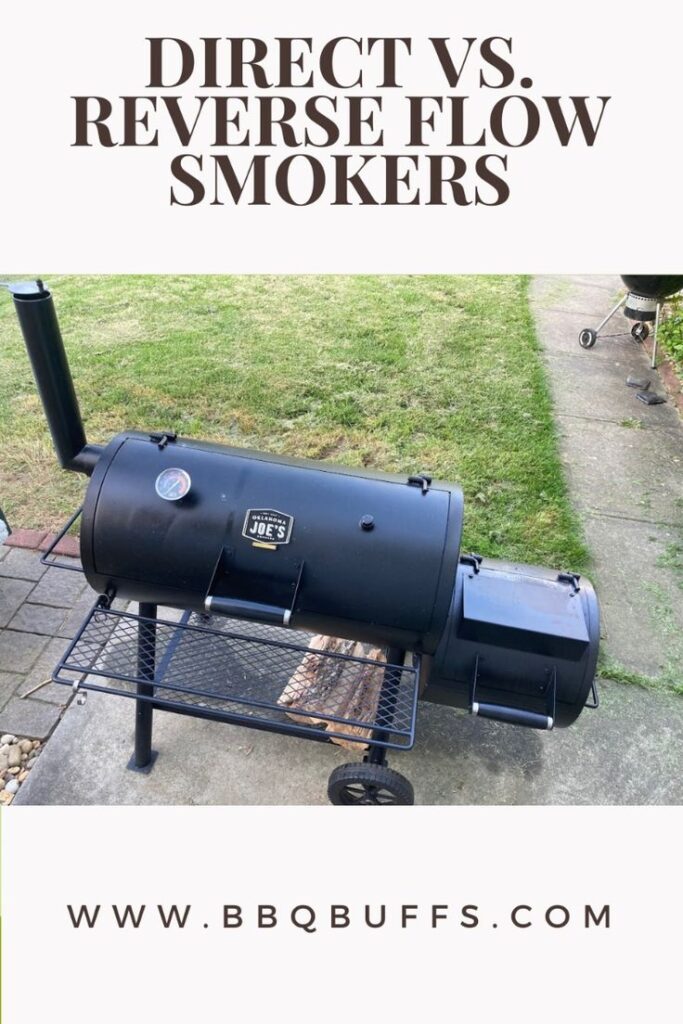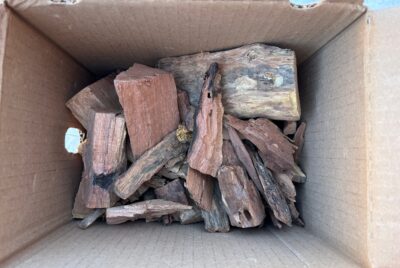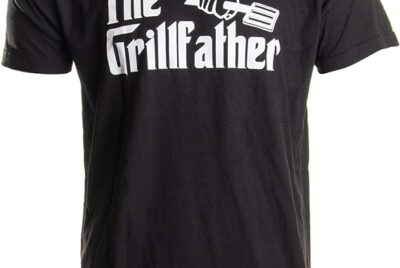Offset BBQ- Direct vs. Reverse Flow Smoking
By now… if you have done any reading on this website, you know how I LOVE LOVE LOVE an offset smoker. But one of the biggest questions I had, back before I knew what I was talking about (well, I still might not, just ask my wife), was- “What is the difference between direct and reverse flow smoking” when it comes to offset BBQ. Well, let’s figure it out.
When it comes to meat smoking, enthusiasts often find themselves torn between two popular methods: reverse flow and direct flow. Both techniques have their merits, but they also have distinct differences that can affect the outcome of your smoked meats. Whether you’re a seasoned pit-master or a backyard BBQ newbie, understanding these methods can elevate your smoking game to a whole new level.
What is Meat Smoking?
Meat smoking is a time-honored cooking technique that infuses meat with rich, smoky flavors by cooking it low and slow over a wood-burning fire. This method not only tenderizes the meat but also imparts a unique taste that you can’t achieve with other cooking methods. Smokers come in various shapes and sizes, each offering different features to enhance the smoking experience.
There are several methods to smoke meat, but two of the most debated are reverse flow and direct flow. Let’s dive deeper into what each method entails and how they differ.
Understanding Reverse Flow Meat Smoking On An Offset BBQ
How Reverse Flow Smoking Works
In a reverse flow smoker, the heat and smoke generated by the firebox travel under a sealed metal plate before rising up into the cooking chamber and then exiting through the chimney on the same side as the firebox. This design forces the smoke to flow over the meat twice, hence the name “reverse flow.”
Benefits of Reverse Flow Smoking
- Even Heat Distribution- One of the standout benefits of reverse flow smoking is the even heat distribution. The metal plate, often referred to as a baffle, acts as a heat sink that spreads the heat evenly across the cooking chamber. This ensures that all parts of the meat cook at the same rate, reducing the risk of hot spots and undercooked sections.
- Enhanced Smoke Flavor- Another advantage is the enhanced smoke flavor. Since the smoke passes over the meat twice, it has more opportunity to impart its flavor. This results in a deeper, more pronounced smoky taste that many BBQ enthusiasts crave.
Exploring Direct Flow Meat Smoking
How Direct Flow Smoking Works
In a direct flow smoker, the heat and smoke travel directly from the firebox into the cooking chamber and then out through a chimney located on the opposite end. This straightforward design allows for quick heat transfer and a more straightforward smoking process.
Advantages of Direct Flow Smoking
- Simplicity and Speed- The primary advantage of direct flow smoking is its simplicity and speed. Without the need for a baffle plate, direct flow smokers can reach optimal smoking temperatures more quickly. This makes them ideal for those who want a more hands-off approach to smoking.
- High-Temperature Cooking- Direct flow smokers are also excellent for high-temperature cooking. If you’re looking to achieve a crispy bark on your brisket or a perfectly seared exterior on your ribs, direct flow smoking can deliver those results more efficiently than reverse flow smokers.
Comparing Reverse Flow and Direct Flow Smoking
Heat and Smoke Distribution
When comparing the two methods, heat and smoke distribution is a critical factor. Reverse flow smokers excel in providing consistent temperatures throughout the cooking chamber, which is essential for evenly cooked meat. On the other hand, direct flow smokers may have more temperature variation, but they can reach higher temperatures more quickly.
Flavor Profiles
Flavor profiles also differ between the two methods. Reverse flow smoking tends to produce a more intense smoky flavor due to the double pass of smoke over the meat. Direct flow smoking, while still delivering excellent flavor, may result in a slightly milder smoky taste.
Cooking Times and Efficiency
In terms of cooking times and efficiency, direct flow smokers often have the upper hand. They heat up faster and can cook meat more quickly, making them a great option for those short on time. Reverse flow smokers, with their slower, more controlled heat, are perfect for those who enjoy the traditional low-and-slow BBQ approach.
Choosing the Right Method for You
Factors to Consider
When deciding between reverse flow and direct flow smoking, several factors come into play. Consider the type of meat you typically smoke, the flavors you prefer, and how much time you’re willing to invest in the smoking process.
Personal Preferences and Cooking Styles
Your personal preferences and cooking style should also guide your decision. If you enjoy experimenting with different wood chips and achieving a deep smoky flavor, a reverse flow smoker might be your best bet. Conversely, if you value simplicity and speed, a direct flow smoker could be more up your alley.
In the end, both reverse flow and direct flow meat smoking have their unique advantages. Your choice will depend on your specific needs and preferences. Whether you opt for the consistent heat of a reverse flow smoker or the straightforward efficiency of a direct flow smoker, mastering either method will undoubtedly lead to delicious, smoky, mouthwatering results. So fire up that smoker, experiment with different techniques, and enjoy the flavorful journey of meat smoking.
FAQs
Can I use a reverse flow smoker for high-temperature cooking? Yes, but reverse flow smokers are generally better suited for low-and-slow cooking. If high temperatures are required, consider a direct flow smoker.
What type of wood is best for smoking meat? The best wood depends on the flavor profile you desire. Hickory, oak, and mesquite are popular choices for their robust flavors, while fruitwoods like apple and cherry offer a milder, sweeter taste.
How do I maintain a consistent temperature in my smoker? Use a high-quality thermometer, manage your airflow, and add fuel regularly to maintain a consistent temperature. It’s an art really!
Can I modify my smoker to switch between reverse and direct flow? Some smokers offer hybrid designs that allow you to switch between reverse and direct flow. Check your smoker’s specifications or consult with the manufacturer. I have to say that most to do not though.
Is meat smoking suitable for all types of meat? Yes, smoking can enhance the flavor of various meats, including beef, pork, chicken, and even fish. Each type of meat may require different smoking times and temperatures.





